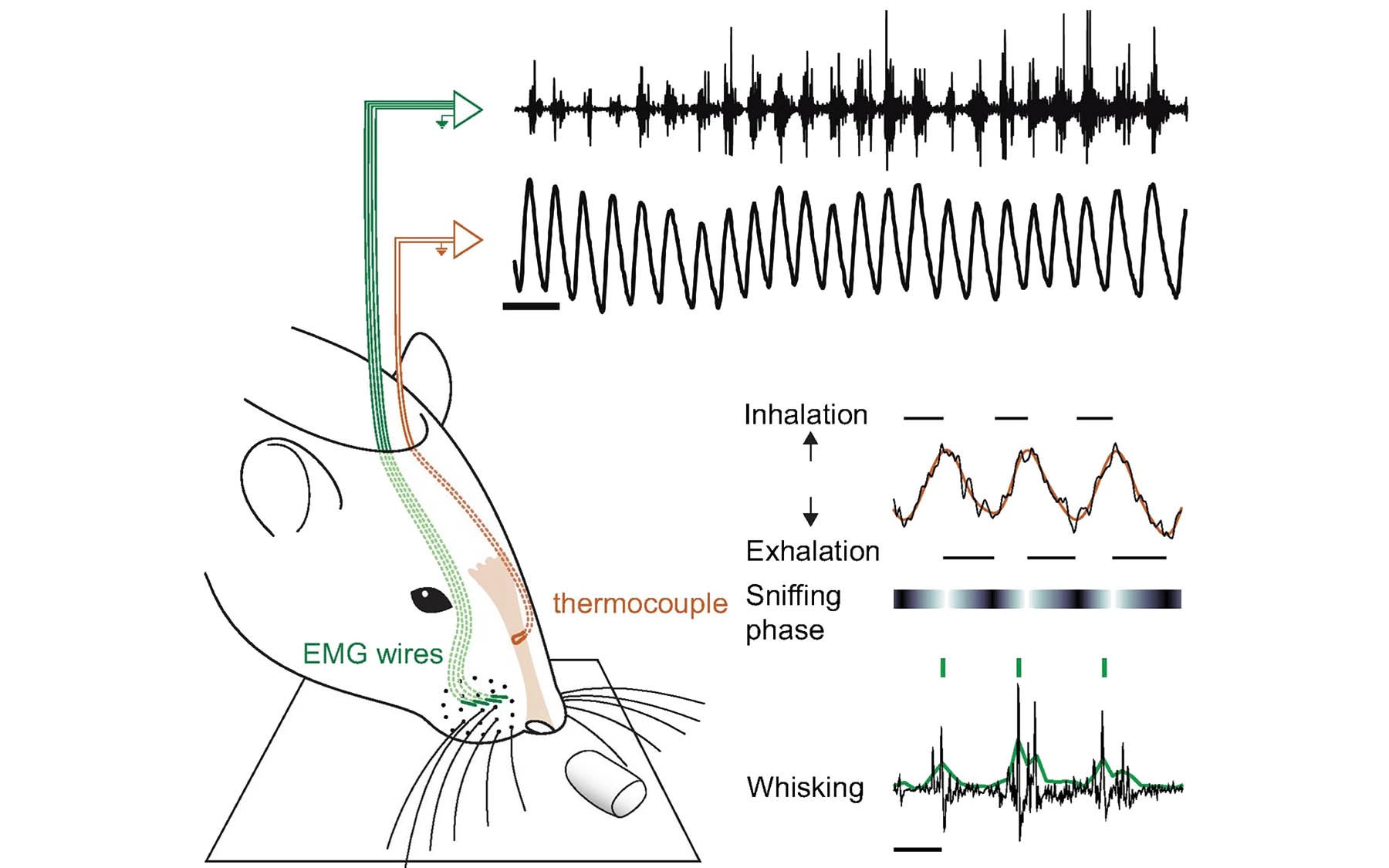Smell and touch, sniffing and “whisking,” are locked in sync
Cold Spring Harbor, NY — When animals are on the hunt for food they likely use many senses, and scientists have wondered how the different senses work together.
New research from the laboratory of CSHL neuroscientist and Assistant Professor Adam Kepecs shows that when rats actively use the senses of smell (sniffing) and touch (through their whiskers) those two processes are locked in synchronicity. The team’s paper, published today in the Journal of Neuroscience, shows that sniffing and “whisking” movements are synchronized even when they are running at different frequencies.
Studies in the 1960s suggested these two sensory activities were coordinated: sniffing, a sharp, profound intake of air; and whisking, the back-and-forth movement of the whiskers to sample the near environment, akin to the sensation of touch as felt through the fingers in humans. Such coordination could be important for decisions that depend on multiple types of sensory information, for instance, locating food. “The question is how two very different streams of sensory information, touch and smell, are integrated into a single multisensory “snapshot” of the environment,” says Kepecs.
These snapshots can be taken at high frequency, up to 12 times a second. To determine whether these two sensorimotor rhythms are indeed phase-locked, Kepecs’ team, including postdocs Sachin Ranade and Balázs Hangya, simultaneously monitored sniffing and whisking in rats freely foraging for food pellets.
At different frequencies occurring between 4-12 times per second they found strong 1:1 phase locking—in other words, every time the rats extended their whiskers to feel their vicinity, they also smelled it. Surprisingly, they found even when the sniffing and whisking rhythms operating at different fundamental frequencies they were locked in phase. Key to this is that the phases of the sensory input—the start of inhalation and onset of whisking—are aligned, which facilitates multisensory integration.
This is similar to how a person’s breathing rhythm settles into place while running and is synchronized to the steps. In both cases, the coordination could be advantageous in terms of energy efficiency. A crucial difference, though, is that in humans, the breathing rate has to catch up to the running rhythm after changes in pace, while for sniffing and whisking in rats they lock into phase immediately.
Even though human behavior doesn’t seem to be overtly tied to rhythms, there are hints that it could be. “Underneath the smoothly executed movements of humans there are rhythm generators, which are sometimes revealed in some diseases, for example the tremors seen in Parkinson’s disease, or in the brain waves that result from the synchronized firing of neurons,” says Kepecs. Studying the rhythms of multisensory inputs in rodents could provide clues to a fundamental principle underlying sensory and brain rhythms that are essential to all animals, including humans.
Written by: Edward Brydon, Science Writer | publicaffairs@cshl.edu | 516-367-8455
Funding
This research was supported by a NIH NINDS grant (R01NS075531) and Klingenstein and Sloan Foundations. B.H. received support from the Swartz Foundation and Marie Curie International Outgoing Fellowship within the EU Seventh Framework Programme for Research and Technological Development.
Citation
“Multiple Modes of Phase Locking between Sniffing and Whisking during Active Exploration” is published online in Journal of Neuroscience on May 8, 2013. The authors are: Sachin Ranade, Balázs Hangya and Adam Kepecs. The paper can be obtained online at doi: 10.1523/JNEUROSCI.3874-12.2013.
